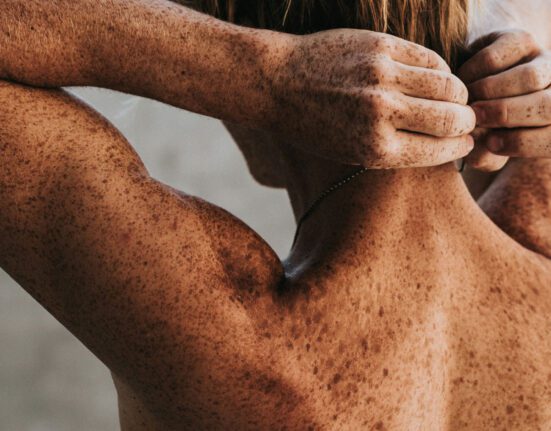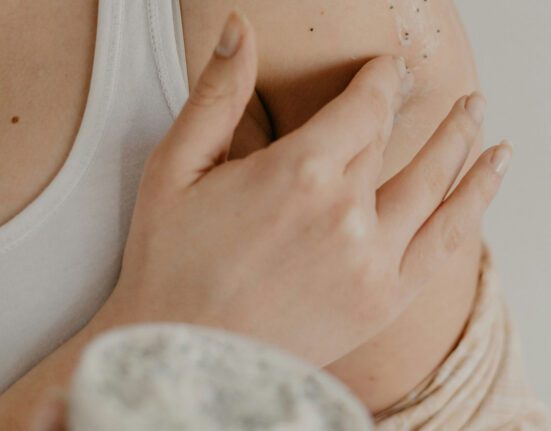Hair Loss. What is it?
Hair loss has emerged as a notable symptom in individuals suffering from Long COVID, presenting both physical and psychological challenges. This overview explores the typical symptoms, demographic profile of those affected, and the prevalence of hair loss in the context of Long COVID.
Typical Symptoms:
Hair loss associated with Long COVID is often characterized by telogen effluvium, a condition where hair prematurely enters the shedding phase. This leads to noticeable thinning or clumps of hair falling out, usually manifesting a few months after the initial infection. Unlike hair loss due to stress or other medical conditions, Long COVID-related hair loss tends to be more persistent and may be accompanied by other long COVID symptoms such as fatigue and cognitive issues.
- Telogen Effluvium: Hair prematurely enters the shedding phase, leading to noticeable thinning or clumps of hair falling out, usually a few months post-infection.
- Persistent Shedding: Unlike typical stress-induced hair loss, Long COVID-related hair loss tends to be more persistent.
- Associated Symptoms: Often accompanied by other Long COVID symptoms such as fatigue, cognitive difficulties, and respiratory issues.
Demographic Profile:
Hair loss in Long COVID affects a diverse demographic. While it can occur in any individual recovering from COVID-19, research indicates that women, younger people, and those from certain ethnic backgrounds (particularly Black and South Asian communities) are more prone to experiencing this symptom. Interestingly, the severity of the initial COVID-19 infection does not necessarily correlate with the likelihood of experiencing hair loss during the long COVID phase, meaning even those with mild initial symptoms can suffer from significant hair loss.
Diverse Affected Groups: Women, younger individuals, and certain ethnic backgrounds (especially Black and South Asian communities) are more prone.
Severity Independence: Hair loss can occur regardless of the severity of the initial COVID-19 infection, affecting even those with mild symptoms.
Prevalence:
Emerging studies have highlighted that hair loss is a common symptom reported by long COVID sufferers. A study published in Nature Medicine found that hair loss, along with reduced libido, was among the 62 symptoms frequently reported by individuals 12 weeks post-infection. The study analyzed health records of over 2.4 million people in the UK, comparing those who had COVID-19 with those who did not. The findings underscored the complexity of long COVID and the wide range of symptoms that can persist long after the initial infection has resolved (UK Research and Innovation) (New Atlas).
Hair loss due to Long COVID, often manifesting as telogen effluvium, can be distressing but is typically temporary. Strategies such as maintaining a nutrient-rich diet, managing stress, and using gentle hair care practices can significantly aid in recovery and promote hair regrowth.
Long Covid The Answers
Relief:
Nutritional Support:
- Ensure a balanced diet rich in essential nutrients like iron, biotin, and vitamin D. These nutrients support hair health and growth .
Gentle Hair Care:
- Avoid aggressive hair treatments such as chemical processes, tight hairstyles, and frequent use of heat styling tools. Opt for gentle hair care routines and use mild shampoos and conditioners (AAD – American Academy of Dermatology).
Stress Management:
- Engage in activities that reduce stress, such as yoga, meditation, and regular physical exercise. Stress management can help mitigate further hair loss and promote overall well-being.
Medical Treatments:
- Consider over-the-counter treatments like minoxidil (Rogaine), which can help stimulate hair growth. Consult with a dermatologist before starting any new treatment (CreakyJoints).
Scalp Care:
- Keep the scalp healthy by maintaining good hygiene and avoiding harsh chemicals. Regular scalp massages can also improve blood circulation and promote hair growth (CreakyJoints).
Supplements:
- Taking supplements that contain essential vitamins and minerals may support hair health. Always consult with a healthcare provider before starting any new supplement regimen (CreakyJoints).
Protective Hairstyles:
- Use protective styles that reduce stress on the hair and scalp, such as loose braids or buns. Wigs or weaves can also be used to cover thinning areas without causing additional damage.
Regular Monitoring:
- Keep track of any changes in hair loss patterns and consult with a healthcare provider or dermatologist for personalized advice and to rule out any underlying conditions.
Credible Sources of Information:
Coming Soon






